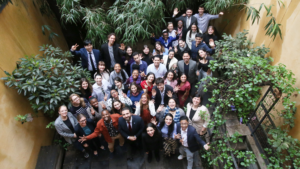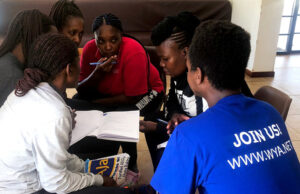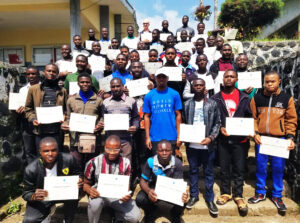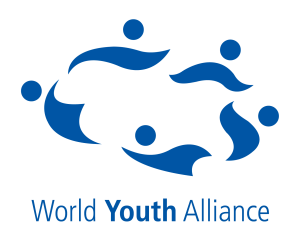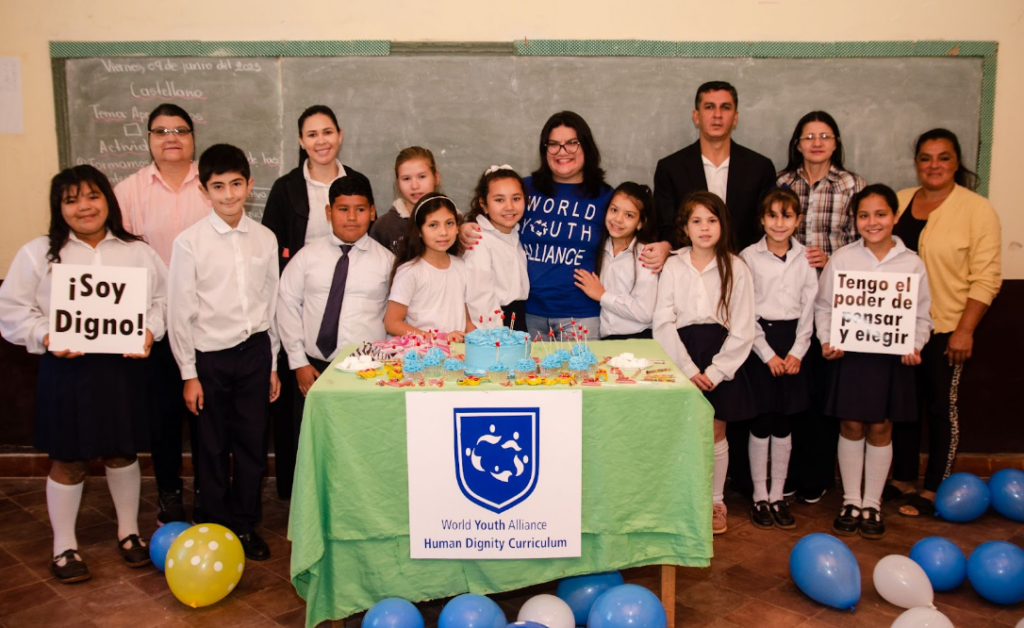
Roció Valdez lives in a small town in Paraguay. There are five schools in the town, and she approached each one to tell them about the Human Dignity Curriculum (HDC). Of these, one gave her permission to present the HDC to the Director of the School and its teachers. She received permission to teach the HDC to the grade three students. And then the pandemic hit.
“At first, students were sent home and school activities were canceled. Then, despite the fact that the school was not allowed to do in-person instruction, the students were told they could go to school on Tuesday and Thursdays to do the HDC.”
I asked Roció what it was like to teach a room full of grade three students, in masks, in an empty building. “The reaction of the kids was really great,” Roció answered, “They were excited about going to the school for a special class and they never missed a class because of how excited they were. We didn’t do certain games or activities in the lesson plan in order to follow the rules regarding social distancing.”
At one point, Roció noticed a couple of students bullying another student. “They were making fun of her because of her skin color. They called her quemadita, which means burned. I told the kids not to say this, but they wouldn’t listen. Then, when we talked about the value of human dignity and that we have human dignity even when we have differences, by the end of that lesson, the tone in the room had changed and students were noticeably more collaborative.”
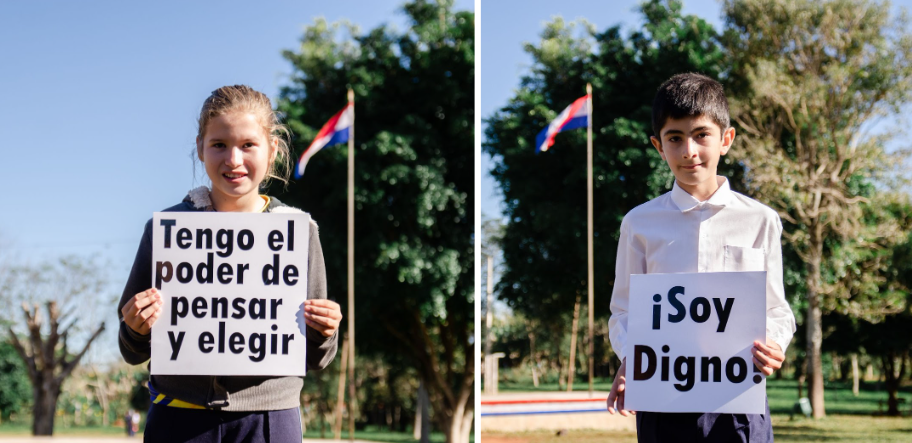
Fast forward to August 2023, when the same school asked Roció to teach the HDC to the grade four students. “Post-pandemic, students across Paraguay are experiencing increased difficulty with reading and writing.” Due to the program’s popularity, the school gave the HDC a two-hour time slot, from 9-11 am every Tuesday and Thursday. At first, the teachers gave a lot of homework to students to make up for the time lost to the HDC class. However, the HDC class was only for one month, and “the kids were still happy because all they wanted was the HDC, so they didn’t care about other homework.” Still, sometimes the HDC class would run for three hours: “The kids would skip their break and eat in the classroom to keep going. We covered a lot of material quickly!”
When Roció missed a class because she was sick, the following class, the kids were sad and angry with her. “One kid asked me, why, why, weren’t you there? And then the students told me not to miss another one.” The HDC covers a lot of important ideas that kids don’t usually get to talk about in school. “The questions are interesting and deep… so, kids are allowed to show their feelings and be sincere.”
“There is a lot of poverty, and many of these children are living in a situation where both their parents have left the country to look for job opportunities. In these families, the kids are left taking care of their grandparents. Most kids are sensitive to the topic and don’t want to talk about their parents at all.” In the lesson on Heroism, the heroes the fourth-grade students selected were their grandparents, their teachers, and Roció. At the end of the class, one student told Rocio that he now knows he has value thanks to her.
I ask Rocio if the kids are surprised to learn they have human dignity. There is a pause. She is crying. “Yes. Of course. At the end of the curriculum, all of the kids cried that the classes were over. HDC gives them back an identity. Because, in the end, the kids understood what human dignity is and that they were really valued. And it made them so happy.”
Want to share the Human Dignity Curriculum with more students? Click the link to visit the HDC website to learn how.
WYA Staff, November 2023.

